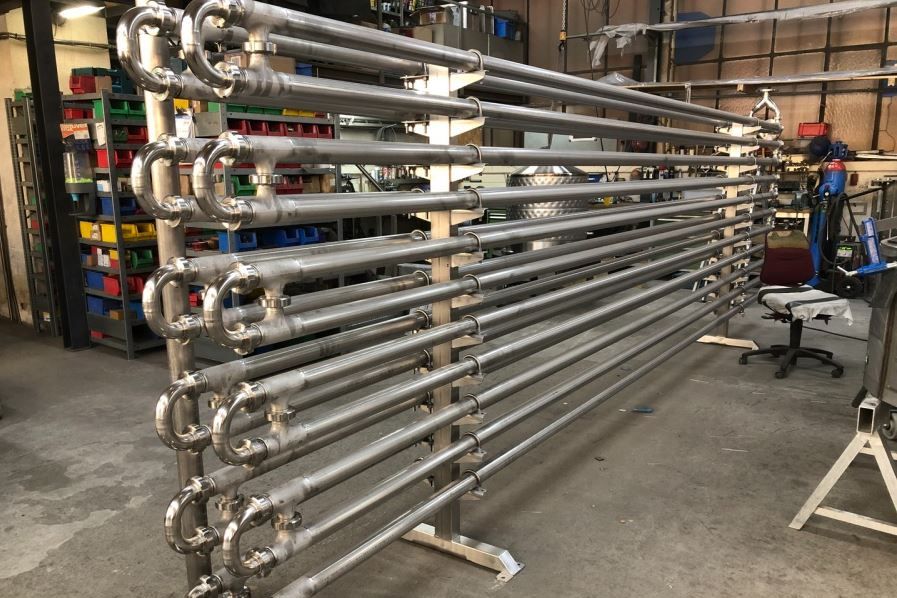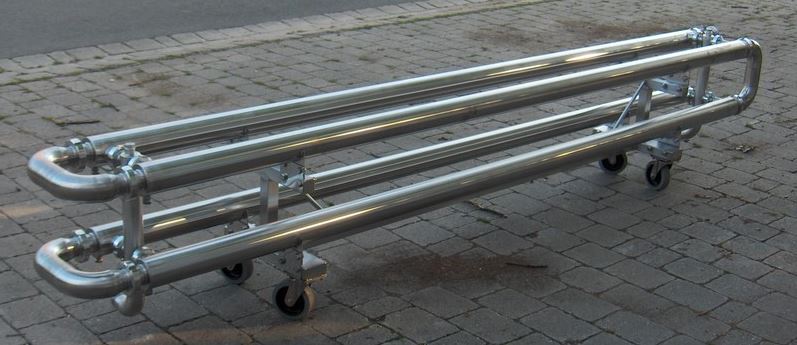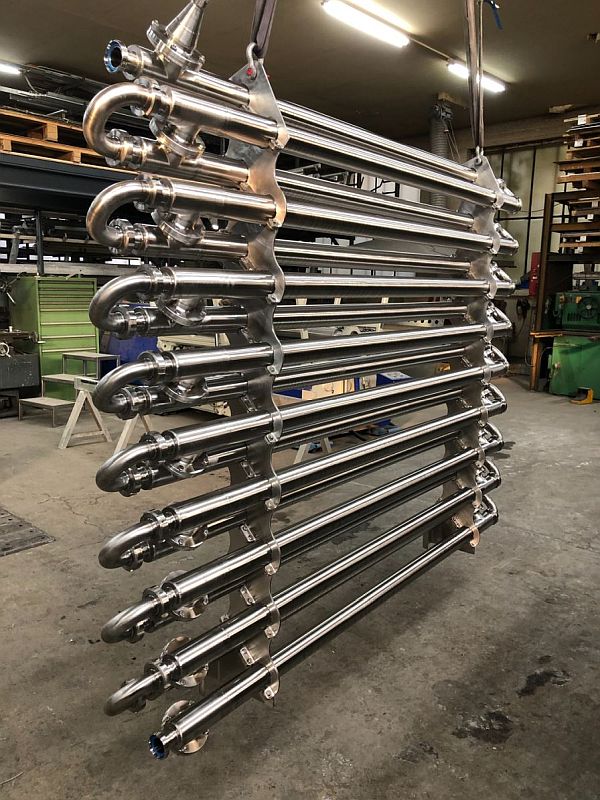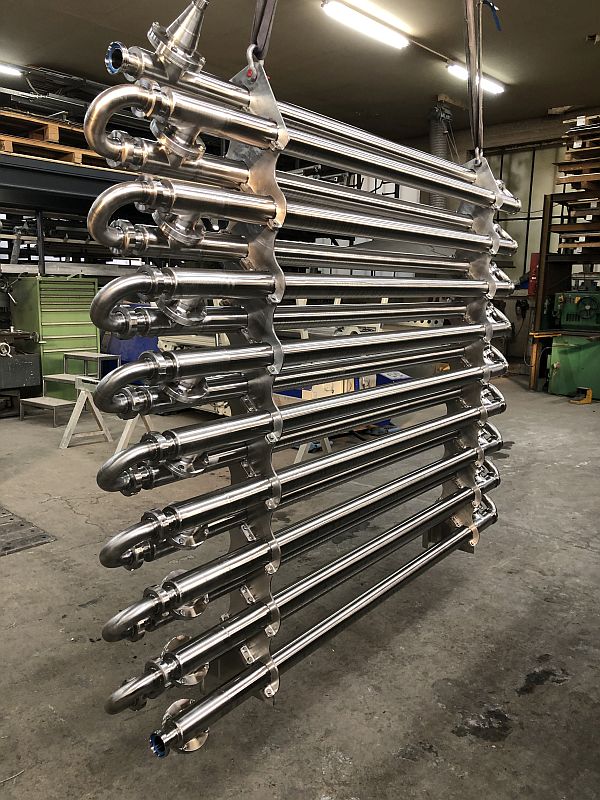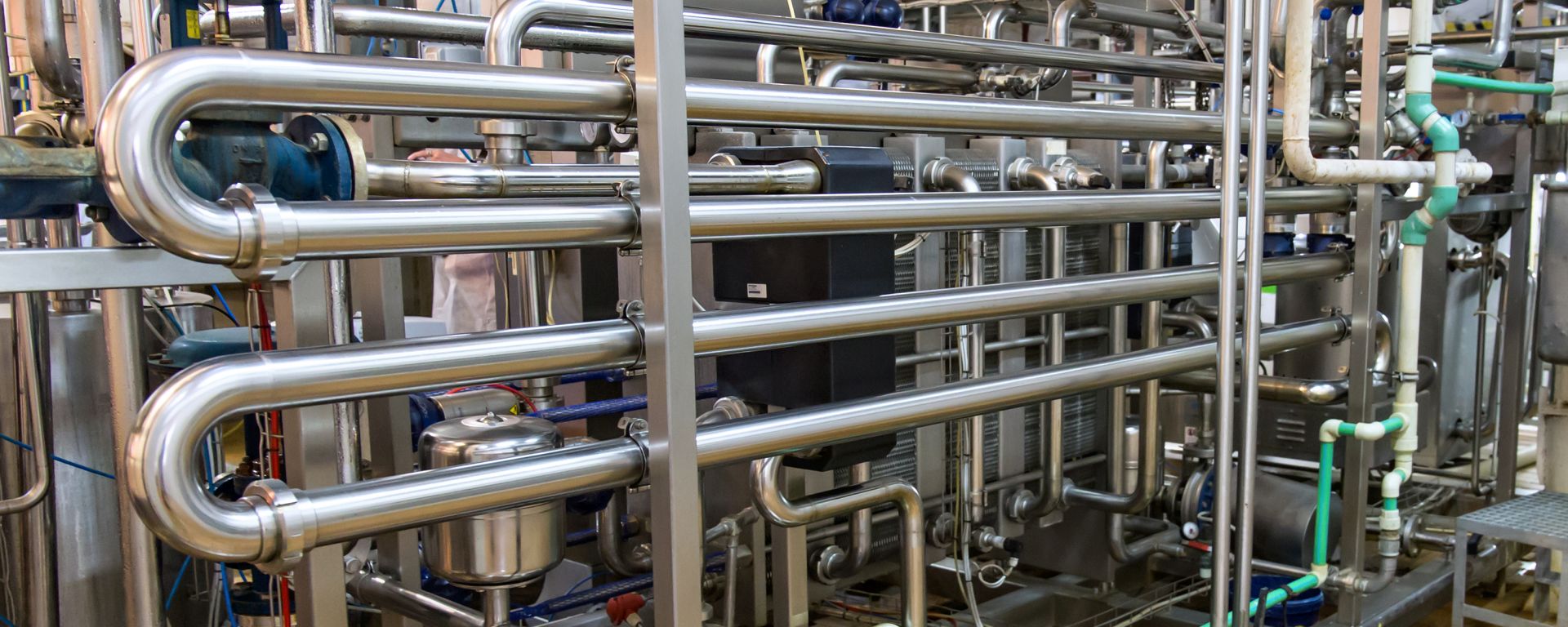
Tubular heat exchanger
Shell and tube heat exchangers are used wherever cooling or heating of products with a certain solid content is required. Depending on the size of the solids content and the viscosity of the product, different systems are used:

Shell and tube heat exchanger

Double-tube heat exchanger
Liebler Tec relies on the highest quality materials
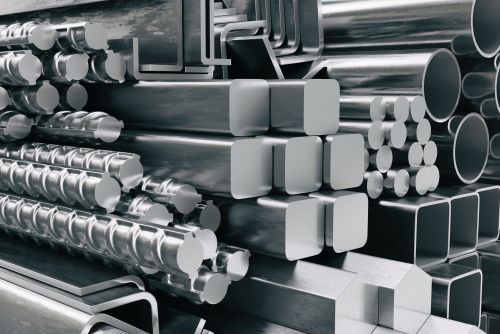
Stainless steel
Stainless steel is the most frequently used material in apparatus engineering. We mainly use the following materials here: 1.4301 / 1.4307 / 1.4541 / 1.4571 / 1.4404 / 1.4435 / 1.4539 / 1.4462

Nickel-based alloys
Vessels made of nickel-based alloys such as Hastelloy or Inconel have particularly high corrosion and temperature resistance. This makes them particularly interesting for the chemical industry and power plant construction.
Main areas of application:
- Heating or cooling of media with low viscosity and low solids content (e.g. must recooling).
- Vapor steam heat exchangers (for heat recovery)
- Gas dehumidification in biogas processing
Shell and tube heat exchanger
A shell-and-tube exchanger consists of several small tubes through which the product usually flows. They are integrated into a larger shell and tube through which the heating or cooling medium flows in countercurrent.
In terms of size, a shell-and-tube heat exchanger is significantly more efficient than a double-tube heat exchanger, but the solids content of the product should not be too large, as this can lead to blockages.
Depending on the requirements and flow velocity, cross-twist tubes can be used for the product-carrying tubes and a swirl tube for the shell tube.
Double-pipe heat exchanger
Consisting of two tubes, one inside the other. The product flows through the inner tube, while it is heated or cooled by the outer tube cross-section.
(Cross) swirl tubes are often used here, as they not only ensure better heat transfer but also, with the appropriate flow, less contamination. However, this advantage comes at the expense of “pigability”. Swirl pipes are certainly passable with a pigging system; however, dirt residues can remain in the pressed-in recesses of the swirl pipes.
Main areas of application:
- Heating or cooling of highly viscous media, certainly with higher solid contents (e.g. grape mash; root or herb mash for the food or pharmaceutical industry).
- Heat recovery from waste water (e.g. laundries)

